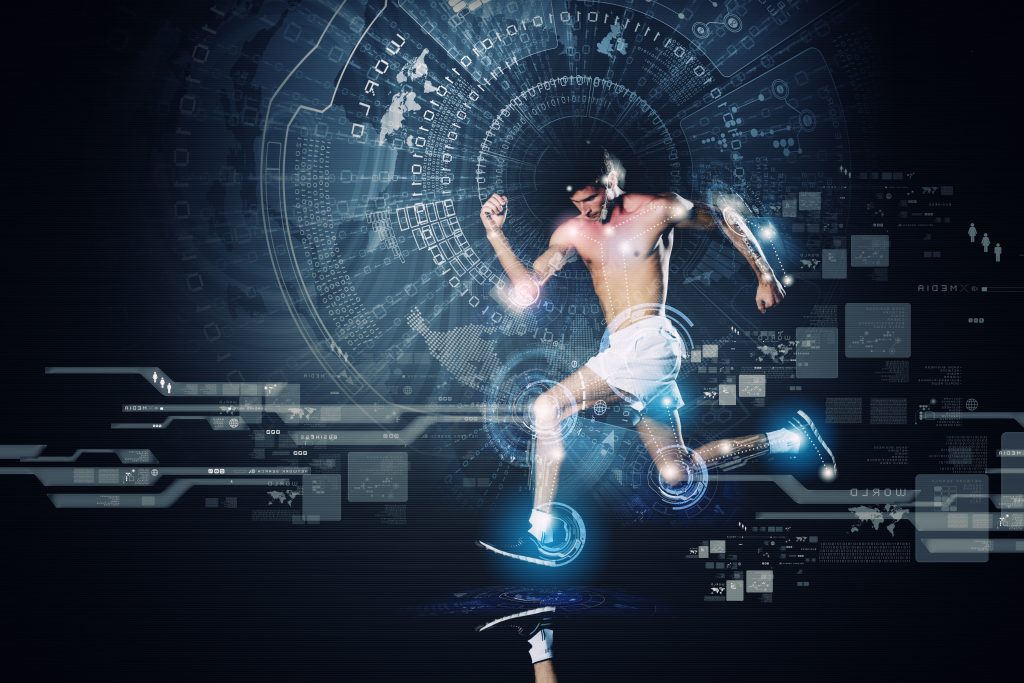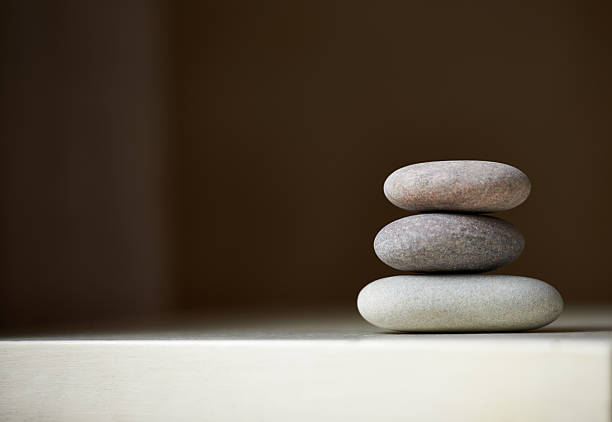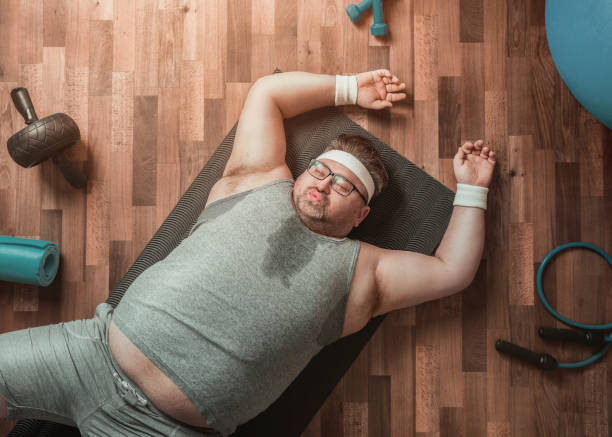Blog
-
Return to Play, Part 1: The R6 Model of Rebuilding and Restoring

When an athlete gets injured, the obvious question is:
“How long until I can return?”
But the better question—the one that actually leads to success—is:
“How do we return the right way?”
Injury recovery is more than rest and clearance. It’s a rebuild of the entire system—movement, confidence, skill, capacity, and readiness.
That’s why I created the Aruka R6 Return-to-Play Model—a skill-based, phase-driven recovery process built to restore full performance, not just check the boxes.
🔷 What Makes R6 Unique
Most return-to-play systems fall short because they focus on timelines, pain reports, or surface-level readiness. The R6 Model solves this by offering three distinct advantages:
- It’s a Skill-Based Performance Model
We don’t just restore tissue—we restore skill competency. The athlete’s ability to move, stabilize, react, and perform must be rebuilt with intention and precision. - It Structures the Rebuild Phase into Three Clear Stages
Most injuries stall in the middle. That’s why Phase 3 is broken into ALPHA, BETA, and OMEGA stages, each with its own assessments, key performance indicators (KPIs), exercise types, surface and tempo guidance, and exit markers to progress safely. - It Requires a Global, Non-Siloed Team Approach
R6 removes the walls between medical, therapy, performance, parents, and athletes. This model succeeds only when everyone communicates, collaborates, and understands the athlete’s full journey.
🌀 The Six Phases of the R6 Model
Let’s walk through the full framework. In this article, we’ll explore the first three phases: Repair, Restore, and Rebuild.
PHASE 1: REPAIR
“Start healing. Set the tone.”
This is the immediate post-injury stage, medically supervised and built around protection and foundational activation. It may not be necessary for chronic or mild injuries, but for acute injuries—especially post-surgical cases—this phase is critical.
Key Objectives:
- Protect the injured site
- Reduce swelling/inflammation
- Support healing through circulation and nutrition
- Reintroduce light, pain-free movement
- Begin muscle activation without overload
- Build athlete trust and emotional stability
Applicable Populations:
- Surgical patients
- Acute trauma cases
- Major joint injuries (ACL, Achilles, labral tears)
Team Roles:
- Orthopedist
- Physical Therapist
- Athletic Trainer
- Parents (in youth cases)
PHASE 2: RESTORE
“Regain control. Reduce compensation.”
Now we shift to joint mechanics, proprioception, and postural stability. The athlete must begin to move without fear or faulty patterns.
Key Objectives:
- Restore pain-free range of motion
- Rebuild balance and proprioception
- Eliminate early compensations
- Re-establish joint integrity and neuromuscular control
- Begin bilateral and sagittal plane movements with quality
Focus Areas:
- Soft tissue mobilization (if needed)
- Isolated joint movement and positional holds
- Controlled ROM on stable surfaces
- Relearning proper gait or stance
- Begin breathing and bracing mechanics
Exit Markers:
- No visible compensations in basic movement
- Full passive and active ROM (compared bilaterally)
- Controlled balance in static positions
- Confidence to begin structured rebuilding
Team Communication:
This is the first major handshake between medical and performance teams. Both must assess the athlete’s capacity and agree on readiness for Rebuild.
PHASE 3: REBUILD — The Engine of the R6 Model
“Rebuild capacity. Restore skill. Eliminate dysfunction.”
This is where the Aruka philosophy comes alive. Most recovery protocols dump all training into one open-ended “rebuild” phase—but not here.
We divide REBUILD into three strategic stages:
🔹 Stage 1: ALPHA (Surgical/Acute Cases)
Goal: Re-establish movement literacy, eliminate dysfunction, and stabilize control.
Key Features:
- Assessments:
- Balance: Standing Stork, Walking Single-Leg RDL
- Gait Pattern: Walking Rudiment
- Functional Movement: Basic Motion IQ
- Exercise Types:
✅ Range of Motion, Breathing, Global Movement
⚠️ Coordination, Strength, Endurance
❌ No Agility - Planes of Motion: Sagittal and Frontal
- Tempo: Walk, March, Light Jog
- Surfaces: Water, Grass, Turf, Gym Floor
- Work Capacity: Aerobic emphasis
- Psychological Cues: Apprehension, fear, reactivity
Exit Markers:
- Pain-free basic locomotion
- Consistent balance control
- Early force symmetry (if tested)
- Confidence to load movements at low intensity
🔹 Stage 2: BETA (Intermediate Recovery)
Goal: Increase volume, intensity, and skill demand with controlled progression.
Key Features:
- Assessments:
- Unilateral Strength & Motion Control
- Advanced Motion IQ drills
- Movement Pattern Consistency
- Exercise Types:
Add Strength, Endurance, Coordination - Planes of Motion: All
- Tempo: Jog, Skip, Controlled Plyos
- Surfaces: Turf, Court, Field
- Work Capacity: Aerobic + Anaerobic introduction
- Psychological Focus: Restore rhythm and timing under fatigue
Exit Markers:
- Symmetrical single-limb control
- Capacity for deceleration and change of direction
- Fatigue tolerance without movement degradation
🔹 Stage 3: OMEGA (Mild/Chronic Injuries)
Goal: Reintegration into full movement complexity and early performance rhythm.
Key Features:
- Assessments:
- Advanced Agility IQ
- Elasticity, reactivity, rhythm coordination
- Exercise Types:
Add Speed/Force and Light Agility - Planes of Motion: All
- Tempo: Sprint Progressions, Decel-Accel Drills
- Surfaces: All applicable to sport
- Work Capacity: High-end anaerobic + performance skill
- Psychological Cues: Confidence, reactivity, adaptability
Exit Markers:
- Multiplanar performance with control
- Return-to-sport skills demonstrated at 85–90% intensity
- No regressions under speed, fatigue, or stimulus
- Team clearance for Phase 4 (Return)
🔜 Coming in Part 2…
In the next article, we’ll explore the final three phases of the R6 Model:
- Return: Structuring re-entry into sport or group activity
- Reassess: Confirming readiness through testing and psychological markers
- Resume: Full clearance and long-term maintenance strategies
We’ll also preview the Summer 2025 launch of Aruka’s 12 Pre-Built RTP Protocols—built directly from this model.
Until then, remember:
Healing is a process. Recovery is a system. Return is a responsibility.
That’s why we rebuild—and restore—the right way.—Coach J
Kent Johnston - It’s a Skill-Based Performance Model
-
Neurogenics in Motion: Training the Brain-Body Connection

If there’s one concept that sets an athlete apart, it’s this:
Train the brain as much as the body.
In today’s performance world, most people still train like it’s the 1990s—chasing muscle, chasing speed, chasing numbers. But here’s what they’re missing:
The brain drives movement.
The nervous system runs the show.
And without training the brain-body connection, you’re never unlocking full potential.That’s why I created the system we call Athletic Neurogenics—where cognitive function and physical performance grow together.
Let me explain how it works.
What Is Athletic Neurogenics?
Athletic Neurogenics is the intentional integration of movement and cognitive stimulus. It’s grounded in neuroscience and designed to improve:
- Brain-body communication
- Motor control and coordination
- Reaction time and decision-making
- Spatial and rhythmic awareness
- Emotional regulation and adaptability
It’s not just about how hard you train.
It’s about how smart your body becomes while doing it.We use it across all populations:
- Young athletes developing motor control
- Injured athletes retraining patterns post-trauma
- Adults over 30 protecting brain function through movement
- Elite performers looking for a competitive edge
This is performance from the inside out.
Why Movement Alone Isn’t Enough
Most people train for muscle and movement. But here’s the truth:
You can move without thinking. But you can’t perform without processing.
Whether you’re sprinting down a field, adjusting your balance on a trail run, or reacting to a change in tempo in a rehab drill—your brain has to make real-time decisions.
If your system is lagging—physically or cognitively—performance breaks down.
That’s why we integrate cognitive tasking into movement:
- Call-and-response drills
- Pattern recognition and rhythm sequencing
- Reactive change-of-direction work
- Novel movement skills that challenge coordination
- Eye tracking, visual stimulus, and proprioceptive demands
And here’s the kicker—when you combine novelty, precision, and timing in movement, the brain gets stronger.
Neuroplasticity: Rewiring Through Movement
Every time you learn a new skill or perform a complex task under pressure, your brain forms new neural pathways.That’s the essence of neuroplasticity—your brain’s ability to change, adapt, and grow through experience.
When you apply neuroplasticity to physical training, you get:
- Smarter movement
- Faster learning curves
- Better motor control
- Stronger emotional regulation under stress
- Delayed cognitive decline with age
That’s why I say this system isn’t just for athletes—it’s for everyone.
It protects the brain.
It elevates performance.
It restores confidence in movement.
Real-Life Applications
For athletes:
Improved processing speed, adaptability, sport vision, and performance under pressure.For rehab and RTP:
Restores proprioception, corrects compensations, and rebuilds trust in the system.For adults 30+:
Enhances balance, reaction time, and brain health—while keeping movement novel and engaging.For youth:
Supports brain development through skill exploration and coordination sequencing.This isn’t “extra.” This is the core of how humans perform and sustain health over a lifetime.
What It Looks Like in Training
Here are some simple examples we use:
- Pogo hops while spelling a word backward
- Lateral shuffle responding to verbal or visual cues
- Marching in rhythm while clapping to an offbeat tempo
- Performing lunges while tracking an object with the eyes
- Change-of-direction drills based on external stimuli
These drills challenge the body—but more importantly, they challenge the brain’s role in movement.
Why It Matters Now More Than Ever
We live in a world that encourages passive input.
Screens dominate attention. Movement is shallow. Thinking is distracted.Athletic Neurogenics flips that script.
It builds presence. Precision. Processing.
It reawakens the body’s potential through the nervous system.
It develops focus, speed, and adaptability in real time.Whether you’re returning from injury, rebuilding coordination, or optimizing elite performance—train the brain-body system. Always.
-
The Three Big Rocks of Aruka Performance

By Coach J
If you’ve been following this series, you know by now—we don’t chase trends at Aruka. We build principles, not just programs.
And when it comes to performance development—whether you’re an athlete, a coach, or someone trying to move better and live longer—you need a solid foundation.
I call that foundation The Three Big Rocks of Aruka Performance:
- Skill Mastery
- Bio-Motor Ability Enhancement
- Movement & Athletic Neurogenics
These aren’t just concepts. They’re the pillars that hold up everything we do—from training and return-to-play, to longevity and youth development.
Let me walk you through each one.
Big Rock #1: Skill Mastery
Skill is the gateway to performance. Period.
I’ve said it before, and I’ll say it again – while a certain amount of stability and strength are needed to gain and improve skills —skill must come before strength, speed, or load program emphasis. If you can’t move well, you won’t train well. And if you don’t train well, you won’t last.
That’s why Aruka starts by teaching and restoring what I call the Movement Skills for Life:
Balance, Walk, Run, Sprint, Jump, Skip, Hop, Shuffle/Slide, Throw, Catch, Strike, Kick
These aren’t just for kids. They’re the foundation of everything from elite-level sprinting to everyday mobility.
We assess many of these skills along with important fitness skills through our Movement IQ Screen. We identify gaps, then rebuild movement confidence with intentional drills, corrective strategies, and skill coaching.
Skill is the great equalizer—it benefits the young and the aging, the strong and the broken. When you master skill, everything else becomes more powerful.
Big Rock #2: Bio-Motor Ability Enhancement
Once skill is solid, now we develop the engine.
Bio-motor abilities are the raw performance traits that every human possesses—and every athlete must refine:
- Strength
- Endurance
- Speed
- Power
- Agility
- Coordination
But here’s the catch: These traits are only valuable when they’re expressed through movement.
It’s not enough to be strong—you must move strong.
It’s not enough to be fast—you must move fast with control.At Aruka, we train athletes to display these abilities in all three planes of motion—sagittal, frontal, and transverse—because life and sport don’t happen in a straight line.
We integrate these qualities into both performance and recovery programs, using structured progressions, individualized dosing, and—always—proper skill execution.
Big Rock #3: Movement & Athletic Neurogenics
This is the Aruka differentiator.
Most training systems focus on muscles.
We focus on brains and bodies—together.Athletic Neurogenics is our brain-body training model that combines:
- Movement patterns
- Cognitive tasking
- Novel coordination drills
- Skill sequencing
- Decision-making and timing challenges
It’s neuroplasticity in motion—designed to:
- Sharpen coordination
- Build new neural pathways
- Improve rhythm and reaction
- Enhance adaptability
- Boost mental engagement
This system is powerful for:
- Youth developing motor control
- Injured athletes rebuilding brain-body trust
- Aging adults seeking cognitive longevity
- High performers refining their edge
And here’s the truth: If your training isn’t training your brain, it’s leaving performance on the table.
Why These Rocks Matter
These three Big Rocks work together, not separately.
- Skill without bio-motor development is limited.
- Bio-motor power without skill is risky.
- And both without neurogenics? You’re training the body—but not the system that controls it.
Performance That Lasts
Anyone can push hard for six weeks.
But that’s not what we’re after.We’re building:
- Lifelong movers
- Injury-resistant athletes
- Confident, coordinated individuals
- People who feel free and capable in their own bodies
And we do that by honoring the Three Big Rocks.
Skill makes you efficient.
Power makes you dangerous.
Neurogenics makes you adaptable. -
The Movement Crisis: Understanding and Fixing Dysfunction

By Coach J
We’re facing a crisis.
Not one that gets breaking news headlines… but one that’s quietly stealing health, performance, and freedom from millions of people every day.
It’s the movement crisis—and it’s real.
As a coach who’s worked with elite athletes, everyday movers, and those recovering from injury, I’ve seen it firsthand: people are losing the ability to move well. And without movement, everything else in health starts to fall apart.
What Exactly Is Movement Dysfunction?
At Aruka, we define movement dysfunction simply as this:
Movement performed with biomechanical inefficiencies—making it flawed, unstable, or dangerous.
Now, here’s the thing: most people are still moving… they’re just moving poorly. And that poor movement slowly chips away at the body—causing wear, pain, compensation, and eventually injury.
You don’t notice it at first. But over time, it shows up as:
- Recurring pain
- Stiffness
- Loss of mobility
- Muscle imbalances
- Decline in performance
You can be strong, fast, and even fit—and still be moving dysfunctionally.
Where Does Dysfunction Come From?
There are two main culprits:
- A lack of proper learning.
Most people never received real movement education. No one taught them how to squat, run, skip, or throw with mechanics that preserve joint integrity and performance. Instead, we develop habits that feel right—but are wrong. - Compensatory patterns from pain, injury, or trauma.
When pain shows up, the brain goes into protection mode. It changes how we move to avoid discomfort—but that new pattern isn’t efficient or sustainable. These “survival” strategies turn into dysfunction that sticks.
In my experience, nearly everyone carries some form of dysfunction—whether they’re a 14-year-old athlete or a 60-year-old executive.
Modern Life Makes It Worse
The 21st century isn’t helping us.
We sit too much, move too little, and stare at screens more than we interact with our own bodies. Most of our “exercise” is crammed into short blocks of time, disconnected from real movement literacy.
The result?
- Tight hips
- Weak glutes
- Poor posture
- Low energy
- Joint degeneration
- Compensations built on top of compensations
We’ve normalized dysfunction. But just because it’s common doesn’t mean it’s healthy—or acceptable.
That’s Why We Assess
At Aruka, we don’t jump into workouts.
We start with assessment.We use tools like:
- Movement IQ Screens to evaluate the 12 Movement Skills for Life
- Injury Risk Analysis to identify red flags before they become problems
- Dynamic movement testing to see how the body behaves under real conditions
Assessments help us answer one critical question:
“Where is this person breaking down?”
Because if we don’t find that answer—we’re just guessing.
And when you guess with human movement, people get hurt.Motion Therapy: My Answer to Dysfunction
Once we’ve identified the breakdowns, we don’t throw cookie-cutter solutions at people. We use Motion Therapy—a system I developed over years of working with performance and rehabilitation professionals.
Motion Therapy is made up of three key components:
- Corrective Exercises – Precise drills to reteach movement and rewire poor habits.
- Therapeutic Interventions – Used alongside health pros when needed to address pain, inflammation, or tissue restrictions.
- Mobilizations – Techniques to restore range of motion, glide, and joint health.
This isn’t rehab for rehab’s sake. This is rebuilding for long-term performance.
This Isn’t Just for Injured Athletes
If you’re thinking this only applies to athletes recovering from injury—think again.
I’ve used this approach with:
- Grandparents who want to get on the floor and play with their grandkids
- Executives trying to avoid another back flare-up
- Teenagers dealing with chronic tightness
- Lifters who can’t squat without knee pain
Dysfunction is everywhere. But here’s the good news:
So is the solution.
Let’s Restore What Was Lost
I named this system Aruka because it comes from the Hebrew word Arukah—which means “to rebuild and restore.” That’s exactly what we do when we uncover and fix movement dysfunction.
We don’t just want people to survive movement.
We want them to master it.
We want them to feel free, capable, and confident in their own bodies.What’s Next?
In the next article, I’ll take you deeper into Motion Therapy—how it works, why it works, and how we use it to restore people’s lives from the ground up.
Until then, take an honest look at how you move.
Don’t wait for pain to tell you something’s wrong.Let’s rebuild and restore—together.